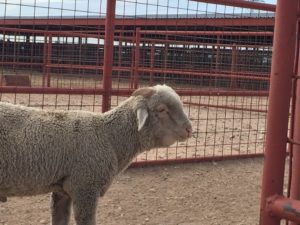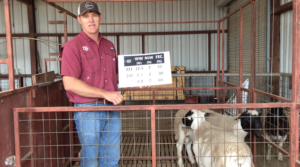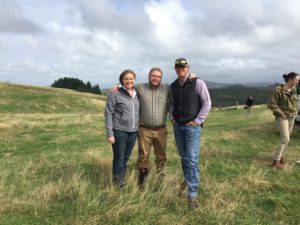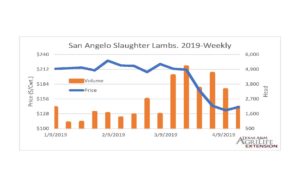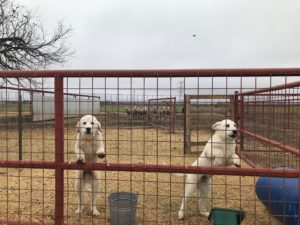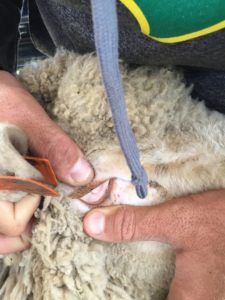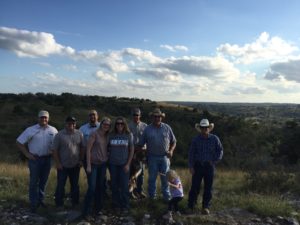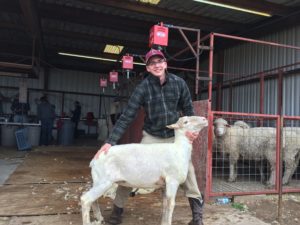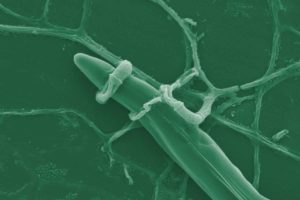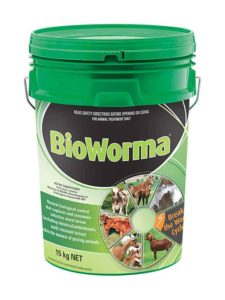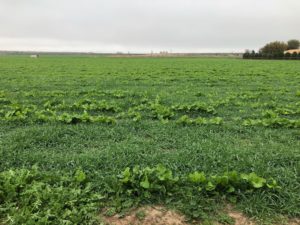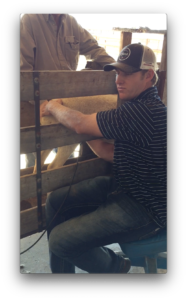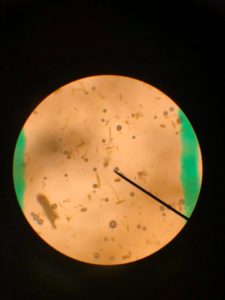Rain Grows Grass and Parasites
Few things make a West Texan smile like spring rain, green grass, and young lambs and kids frolicking in the pastures. This year has been a bountiful reminder of the joys of livestock production.
When my early onset grumpy-rancher syndrome flares up and I catch myself grumbling as thunderheads roll in day after day, I realize that a little mud and moisture is nothing to really complain about. I also have to remind my son that rain is good thing, when his baseball tournaments continuously get rained out. We all know that it is better to have too much rain than not enough.
In reality, there is cause for some concern for those of us with sheep and goats. Internal parasites love rain and warm weather and spring storms seem to invigorate these little suckers (literally, blood suckers!). Warm and wet conditions allow the parasites that have survived in the animals over the winter to amplify on pasture at an alarming rate. The barber pole worm is the most damaging internal parasite of small ruminants and it targets the weak animals in a flock, which tends to be lactating females, young growing offspring, and animals in poor body condition.
Managing sheep and goats to prevent animal health issues from internal parasites is complex and should be a top priority for all small ruminant owners. I recommend farmers and ranchers educate themselves at the following websites: https://www.wormboss.com.au and https://www.wormx.info. These two websites have an abundance of factual and relevant information produced by qualified educators. It goes without saying that there is a lot of misinformation on the Internet if you look in the wrong places.
I also recommend that you follow our Facebook page (https://www.facebook.com/TAMUSheepandGoats/) and YouTube channel (https://www.youtube.com/channel/UCJNtVhyg2crdb4GIrDP891Q). We have produced numerous educational videos on the most effective treatment protocols, such as using combination drenches or copper oxide wire particle boluses.
However, isn’t the best way to deal with a problem is to prevent it from even occurring? With this mindset, Texas A&M AgriLife Research and Extension is working towards breeding sheep and goats that are quantifiably more resistant to internal parasites. We are using the National Sheep Improvement Program to generate Estimated Breeding Values (EBVs) for reduced fecal egg count, the primary measurement of parasitism within the animal. In addition, we are working to validate a new genomics test called Flock54, which has markers for internal parasite resistance.
Although we are only a few years into these breeding programs, we have identified large differences in parasite resistance among our sheep, both wool and hair breeds. Recently, we have attained a couple of grants to conduct research and collaborate with Texas seedstock sheep and goat breeders whom are already using this technology. In other regions of the U.S., attempts at breeding for parasite resistance have paid big dividends, such as with many Katahdin breeders in the Southeast. I am optimistic that this technology will be a real game-changer here in Texas in regards to breeding sheep and goats that require less deworming. Stay tuned!
Texas A&M and other breeders who use this technology will be selling breeding animals after the Texas Sheep and Goat Expo on Aug. 16-17 that will have EBVs for parasite resistance and other performance traits. We encourage that you attend this event, even if you don’t pick up a bidders number we hope you are at least inspired to incorporate parasite testing into your management scheme. Contact your local county extension office or the district office in San Angelo to get registered 325-653-4576.
More and more evidence is mounting that a lot of what makes a sheep or goat profitable comes from characteristics that you simply cannot see. Whether it is parasite tolerance, reproductive capability, disease resistance, etc. we are realizing more of the keys to these real-world difference-making traits lie within the genetic make-up of the animal. Technology is allowing us to explore this at a level that monetarily and scientifically wasn’t possible ten or twenty years ago. The future of our industry is much brighter if we effectively we implement the tools that have been laid out for us. Either stick with traditional methods and remain stagnant or incorporate new ideas and elevate our industry to new levels.
To provide feedback on this article or request topics for future articles, contact me at reid.redden@ag.tamu.edu or 325-657-7324. For general questions about sheep and goats, contact your local Texas A&M AgriLife Extension Service county office. If they can’t answer your question, they have access to someone who can.
